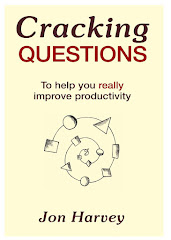The recent White Paper (
Protecting the Public: Supporting the Police to Succeed December 2009) “demands more urgent and radical action to squeeze out unnecessary costs, raise productivity and ensure that we continue to focus on front line delivery.” The White Paper goes on to set out a “wide ranging programme to ...strengthen commitment to collaboration between forces and voluntary mergers where appropriate.” The Home Secretary, in his foreword states that this programme “has to be a priority for us all”.
This is fighting talk and perhaps might be summed up wryly as ‘tough on bureaucracy & duplication and tough on the causes of bureaucracy & duplication’. The police service has been here before. Since the Autumn of 2006 (after police force mergers fell by the wayside), there has been significant pressure on police forces and authorities to make improvements in both efficiency and effectiveness via collaboration.
In the Green Paper of last year (
Chapter 6: Reinforcing collaboration between forces), there is a helpful map which shows collaboration activity across England and Wales. Whilst there have been a few notable & sizable successes, given that this map was created after 2 years of focused investment in collaboration, the public might have expected a little bit more. As the White Paper, points out “Since last year’s Green Paper was published HMIC have, in Get Smart 25, undertaken a detailed review... [and whilst they found] evidence of progress in enhancing capacity and capability to deliver protective services and an increase in collaborations... overall, HMIC were concerned about the pace of progress and readiness across the police service”. (Protective services remain the priority for collaboration efforts since by the end of this year, all forces should be able to demonstrate their readiness to address the highest need areas as required in a ministerial letter of 14/2/07.)
In the light of the White paper identifying that “Forces and Police Authorities supported the idea of collaboration in principle but often struggled in practice” (originally from the paper
Getting Together: A Better deal for the public through joint working HMIC 2009), the real challenge is how to make solid and sustainable progress this time. The purpose of this short article is set out a few guidelines that may help.
Making any programme of change stick requires attention not only to enabling and supporting through new structures & practices (for example) but also (and often critically) to removing barriers to progress. The strength of the drive forwards must be greater that any resistance pressure met. With this in mind, this article argues that the following issues need to be addressed:
The HMIC paper (referenced above) highlights the ‘net donor syndrome’ where each collaboration partner may well remain fearful that they will lose out from a ‘common good’ investment that they each make. This fear discourages investment in and commitment to collaboration. The HMIC’s answer to this is their ‘Informed Choice Model’ which seeks, through value for money research into good practice, to provide 5 levels of ‘support’ to local police services which range from monitoring to mandating. Time (and perhaps a general election) will tell whether this arrangement works in the long term. What this model does highlight are two connected issues, one concerning belief and the other to do with trust.
For collaboration to work there has to be a default belief that a joined up & collaborative service is probably going to be cheaper and better for all concerned. Without this belief, the endless iterations of business plans will be just that, endless. No matter how well researched, a business case is still just a possible future and not a certainty. It seems likely that many collaborative initiatives fall at this first hurdle because the default belief is, in fact, that the status quo is probably cheaper and better. Unless this belief is challenged, the chances are that collaboration will not flourish.
Deciding to work in collaborative partnership with one or more other agencies requires a high level of trust. Unless each agency involved believes that all the others are working for the common good and not for partisan interests, again, collaboration will not flourish. Any actions or behaviour that affirms these trusting relationships will be helpful. The opposite is also true. Each collaborative partners bears a responsibility to support not corrode trust. This is another condition for success.
There is, of course, nothing that succeeds like success. Another condition that needs to be present is clear research into what is working and moreover widespread communication of these positive results. There are many people who will continue to be negative about collaboration (for an array of reasons). Positive news is very important to counter this.
Making a collaborative arrangement work requires an advanced set of skills including negotiation, commercial management, good governance, user consultation, external partnership development, change leadership and project management. Sometimes the investment in developing these skills is seen as costly and a ‘quick-fix-just-do-it’ approach is adopted instead. However, for collaboration to succeed, these deeper and more strategic capabilities are essential.
There are many positive aspects to what may be called ‘police regimentalism’ such as the pride in one’s own force and commitment to the joint endeavour to serve the local community. However in the field of collaboration, this regimentalism can become something of a barrier. There are the real (not apocryphal) stories about diagonal vs. horizontal loops on shirts or numbers of lights on the light bars getting in the way of collaborative working. The ‘we have always done it this way in our force’ (tried but often not tested) approaches are hurdles that require attention. (The commitment of police authorities to collaboration can also be affected by this as well.)
The ‘cost of non conformance’ (a useful starter
site for some ideas around this subject) comes from the field of quality management. This idea seeks to provoke analysis of the ‘real’ costs of providing a service in a certain way, which includes the opportunity cost of not doing it differently. This approach suggests that the rounded and full (quality) costs of running a non collaborative service need to be taken into account when analysing & comparing the cost of setting up and running a collaborative one.
Sometimes the approach taken to develop business cases and then implement collaboration initiatives fail to generate sufficient ardour, urgency or tenacity from stakeholders. A key success factor will rest upon approaches that are inclusive, creative and which integrate the views of the citizen in the eventual design of the new collaborative service. It is also vital to ensure that adequate attention is paid to key financial / HR / legal / procurement etc matters.
Collaboration with more than one partner may continue to be seen, by some, as being in the ‘too hard to do – relative to the benefits achieved’ box. Time may tell whether this is a productive position to take or not. Indeed it may vary from one kind of function to another. It may be the case that major crime investigation is best done by no more than two forces whereas organising for civil contingencies is best done by a regional partnership of four, five or even six forces. Only good evaluation will be able to address these questions.
It would appear that collaboration is still perceived as outside the usual ‘kitbag’ of organisational improvement interventions and therefore used only with some reluctance in many quarters. In particular it can be seen as not delivering improvements in efficiency or performance overall, quickly enough and more ‘standard’ ways are favoured. There is clearly an issue of leadership here for chief officers, senior managers and police authority members to make it crystal clear that collaboration is always an option to be fully explored openly and without prejudice.
This article has argued that successful collaboration is founded upon believing & trusting in its value, broadcasting successes, investing in capability development, using only the best aspects of ‘regimentalism’, analysing the costs & benefits in the round, developing collaboration in ways that create enthusiasm & commitment, evaluating the best collaborative combinations and clear, positive leadership.
The question remains however: just how likely is it that an incoming Government will want to restructure the police service and consequently make collaboration, for the time being, a redundant effort? Or is it more likely that the 2012 Olympics will focus collaborative minds even more keenly and push back any possibility of major restructuring?









.jpg)


